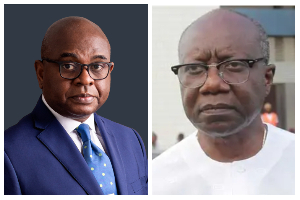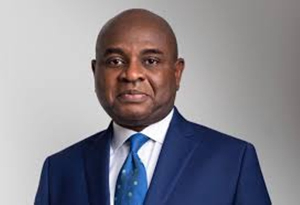(Part I)
By Dr. Robert Adjaye
What is engineering? If you live in a house, use electricity, telephone, fridge/freezer, have access to potable water, listen to music, visit hospitals, drive a car, use the road network and you are reading this paper, then you have sampled engineering. Engineering touches every aspect of our lives. But what is the relationship between engineering and national developmental agenda?
A brief comparative analysis of the development plans of some economies will help us to establish the link between human capital building, national development, Millennium Development Goals (MDGs) and effective application of Science, Engineering, and Technology (SET).
Malaysia’s development plans began in 1950 with publication of the Draft Development Plan for Malaya. Thereafter Malaysia has had about 23 Development Planning Documents to date, 11 of which are 5 Yearly Development Plans. Each development plan incorporates a population and housing census that provides census data on the level, availability and distribution of skilled labour for planning purposes. Malaysia placed high priority on education and skills training to develop a sufficient pool of educated, highly skilled and strongly motivated labour force.
The success of Singapore since its independence in 1965, has become a case study for many nations. In his book From Third World to First, Lee Kuan Yew stated that
“…Our greatest asset was the trust and confidence of the people…………The government played a key role in attracting foreign investment: we built the infrastructure and provided well-planned industrial estates, equity participation in industries, fiscal incentives, and export promotion. ….After a careful study …… we redoubled our emphasis on teaching of science, mathematics, and computers in all our schools. We computerized the whole government administration to set the pace for the private sector. We gave income tax incentives by allowing rapid depreciation for computers.”
South Korea has had a succession of 5-year development plans, starting from 1962. Each 5-year plan identified specific areas of national emphasis and development. For example, the first plan for year 1962 – 1966 emphasized electric power, fertilizer production, petroleum refinery, cement, synthetic fibers, while the plan for 1992-1966 concentrated on development of microelectronics, bioengineering, aerospace, and chemicals. During this same period the per capital gross national product grew from $100 in 1963 to about $24,500 in 2007, a phenomenon frequently referred to as the “Miracle on the Han River ”. (5)
It is reported that when the Chinese leader Deng Xiaoping went on a tour of the Southern Chinese province of Shenzhen, he said that they should catch up with the four Asian tigers of Hong Kong, Singapore , South Korea and Taiwan within 20 years, in economics, social order and social climate. The Chinese leader’s visit was quickly followed by a well-organized and systematic directive and intervention by the Chinese government to move the country forward. They did not leave it to free market forces.
Ghana’s Guggisberg Plan of 1919 – 1926, which was reputed to have been one of the earliest development plans in modern history, was initiated by a Governor who was incidentally an engineer. The first plan was later followed by about ten additional development plans from 1951 to 2004.
Ghana’s current developmental plan is set out in its ‘Growth and Poverty Reduction Strategy (GPRS II ) Coordinated Programme for the Economic and Social Development of Ghana ( 2005 – 2008). Under the section on support services, GPRS II states:
“strategic support services that would be developed …….include transportation, energy, science and technology……….Science and technology policy objective will therefore promote the adoption of appropriate technologies, both local and foreign, with the capacity to improve productivity and efficiency in the agricultural, industrial and services especially for micro, small and medium rural enterprises;” (6) The main goal of Human Resource Development under GPRS II is to ‘ensure the development of a knowledgeable, well-trained and disciplined labour force with the capacity to drive and sustain private sector-led growth.’
Do we as a nation know to what extent we’ve gone towards achievement of these laudable goals?
CONVERGENCE OF DEV’T PLANS AND MDGs:
The objectives of most development plans are to improve access to education, health, shelter, infrastructure and creation of wealth. The principal differences between political parties and governments have been how these goals are achieved and the distribution of the benefits thereof. Most of these developmental objectives can be realized by judicious implementation of engineering initiatives, such as:
.
Infrastructure: engineering can improve infrastructure through provision of electricity, water, transportation, sanitation, ICT, houses, etc.
Health: Many a time, when we talk about health, we tend to forget the major role played by engineers to provide the infrastructure that complements health delivery, e.g. accommodation, public health education by radio/TV, water and sanitation, bio-medical equipment, proper diet and basic hygiene to reduce the incidence of communicable diseases, and improvement in public health so as to reduce the occasion for referral to hospitals for acute medical attention.
Agriculture: The major objective of many national agricultural initiatives is to provide Ghanaians with ready access to the right type, quantity and quality of food and nutrition at affordable prices. In Ghana where farming is still dominated by peasant farmers, it is quite obvious that the only way to successfully feed the nation is to employ mechanized farming with appropriate irrigation facilities and efficient road network to farming centres.
Governance and the Rule of Law: dissemination of information, maintenance of law and order, early and efficient discharge of cases in courts, would all benefit from increased computerization, communication and injection of mega doses of engineering.
MILLENIUM DEVELOPMENT GOALS (MDGs) (9) On closer examination, one cannot fail to realize the convergence of critical national development objectives and the Millennium Development Goals. That being the case, consideration will also be given to how engineering can facilitate achievement of the MDGs.
Goal 1 - Eradicate Extreme Poverty and Hunger: The approach is to provide the public with access to readily available and affordable food. As our farms are still dominated by peasant farmers and the supply chain from farms to the consumer centres lack adequate planning and logistics, a move away from small scale farming to fully integrated large scale farming will improve food production, and help achieve the MDG. Engineering can be exploited to provide irrigation, mechanized planting and harvesting, processing and storage of farm produce, transportation and distribution of food.
Goal 2 - Achieve Universal Education: Access to basic education and development of the human capital base will help us to achieve the objective of the second MDG. In this respect, engineering can provide the infrastructure for education facilities, and ICT for distance learning to enable the majority of the population who live outside the urban centres to benefit from tuition by distant located experts.
Goal 3 - Promote Gender Equality and Empower Women: Promoting equality and empowerment of our able and hard working women could be further augmented through provision of reliable and affordable ICT and distance learning facilities to train and build the human resource capacity of women.An educated woman is an empowered woman.
Goal 4 - Reduce Child Mortality: The target is to reduce by two thirds the mortality rate among children under five years. Developing nations lose sizeable proportions of their human resources through relatively high child mortality rates. Here again, engineering can be effectively harnessed to construct health centres, improve transportation to these health centres, and provide affordable and robust refrigeration and storage facilities for medicines.
Goal 5 - Improve Maternal Health: Death during pregnancy and child birth can be substantially reduced by education, antenatal care, skilled birth attendants, and better infrastructural facilities, e.g. health centres, roads, potable water, sanitation, etc. and through appropriate malaria reduction programmes. Engineering can therefore be harnessed to play a major part to achieve the objectives of Goal 5.
Goal 6 - Combat HIV/AIDS, Malaria and other Diseases: Malaria kills about one million Africans a year. Large communities do not have access to preventive information, technologies and tools to support the behavioral change necessary to eradicate malaria.(10) Effective and sustainable ways of combating HIV/AIDS, malaria and other communicable and environmental diseases can be achieved through exploitation of engineering to communicate, educate, provide potable water, and efficient sanitation and waste management.
Goal 7 - Ensure Environmental Sustainability: Use of renewal energy, less emphasis on charcoal, and greater usage of gas from oil/gas production fields. Under such a programme, the emphasis will be to reduce flaring to derive maximum benefit from natural gas production.
Goal 8 - Develop a Global Partnership for Development: Engineers can work with Government and other professional bodies, to establish acceptable and manageable systems for enhancing the domestic content of developmental projects, and promotion of local content in the oil/gas industry. This would enhance partnership between foreign and local engineering firms to build and sustain the local engineering capacity that is necessary to maintain existing infrastructure, and to develop solutions for future engineering challenges. However these benefits can only be fully realized when Ghana has a workable Engineering Bill that seeks to regulate the practice and standard of engineering in delivery of goods, works and services. Additionally a petroleum policy that establishes clear operational directives and empowers institutions to supervise and manage the petroleum industry is required.
The Author, Dr. Robert Adjaye is an Engineering Consultant and Past President of The Ghana Institution of Engineers. He is also the Rector of the Petroleum Skills Development Institute (PSDI) in Accra.
E-mail: radjaye@yahoo.com
Opinions of Saturday, 23 October 2010
Columnist: Adjaye, Robert














